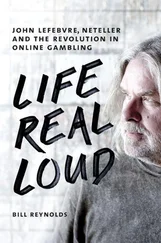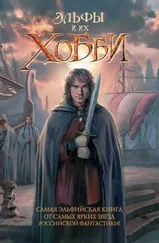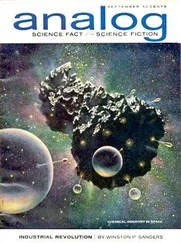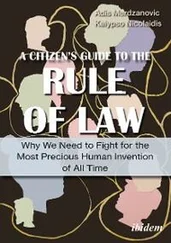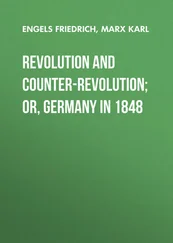Skinny — Probably won the election because he had a closer shave than Nixon.
Props — Marilyn Monroe was a key member of the bedroom cabinet.
Pros — After the invasion tanked he sheepishly admitted his mistake by saying “How could I have been so stupid to let them go ahead?”
Cons — This epiphany came a week too late.
Fidel Castro— young, exceedingly lucky and charismatic, the new dictator was ready to join forces with the Soviet Union in the worldwide struggle against the shopping mall. Before taking command with his merry band of a dozen comrades, he convinced the world he was a major threat to Cuban dictator Batista. When Batista suddenly fled the country, Castro found himself in charge.
Skinny — Mass executions not as fun since Ché bought it in Bolivia.
Props — Knew an invasion was coming. He read about it in the U.S. newspapers.
Pros — Big baseball fan. Found it easy to motivate players with jail time and random killings.
Cons — Tested the revolutionary zeal of his underfed and TV-deprived citizens by requiring them to sit through four-hour harangues.
Richard Bissell— The reputedly brilliant chief of covert operations for the CIA, he was managing his first major coup without a net, notes, or a plan. He conceived the entire operation and was the one person who knew all the ways it could fail, and he was determined to keep them secret.
Skinny — Yale man. Studied there, taught there. Never featured on the cover of the course catalog.
Props — Overthrew countries from a desk in Washington, D.C.
Pros — Created the U-2 spy plane.
Cons — Needed a spy plane to find his career after the invasion flopped.
When Castro first took over Cuba in January 1959, following the New Year’s Day flight of dictator Fulgencio Batista, he had everyone confused. No one knew quite what he stood for. He told the world that he led a people’s revolution that aimed to install all the trappings of the good society; free press, elections, good schools, and health care for all. Crowds cheered him during his first visit to the United States in April 1959. Many in the CIA wanted to support him. Even after a three-hour meeting with the famed Red-hunter Richard Nixon, the true picture of Fidel remained fuzzy. He was a tantalizing blend of Lenin and Elvis.
It didn’t take long, however, for the real Castro to emerge. Starting in mid-1959 Castro took over the large hotels and then, outrage of outrages, outlawed gambling. Even more ominously, he rounded up political opponents and summarily shot them. He slowly closed his grip on Cuban society. Many people fled; airline pilots often hijacked their own planes and flew them to the United States. After Castro’s takeover, the Cuban community in Miami swelled with exiles. They demanded immediate coup action. Some shipped arms to anti-Castro guerrillas in Cuba; others brawled with Castro’s supporters in Miami. The tipping point occurred once Castro linked Kalashnikovs with the Soviet Union in 1960. Now he represented a real threat, and soon thereafter Washington joined the Cuban exile chorus demanding immediate coup action. It was 1960, the height of the Cold War. Kennedy was campaigning by denouncing the Republicans for allowing the United States to fall behind the Russians in strategic missiles. The Communists kept pushing forward around the world while the country shouldered the effort to roll back the Red Menace. Americans fervently believed that when one country came under Soviet domination, other countries were sure to topple. The inescapable logic of the domino theory, which led to numerous international experiments, such as the war in Vietnam, dictated immediate coup action: if the U.S. government stood idly by and let Cuba go Red, the next domino to fall would surely be the United States.
Starting in January 1960, CIA honcho Richard Bissell took the lead in cooking up a strategy. Plans were discussed, meetings held, calls placed. Many of these activities received hearty backing by Nixon, who was particularly eager for the invasion to happen that year to boost his presidential plans. Eisenhower had no qualms about coup action. But in his last year in office, he focused more on his putting game than on pushing for the invasion. He let Nixon run with the ball.
Invading Cuba was actually the backup plan. The first choice was simply to kill Castro. In a striking example of real life imitating a bad movie, in August 1960 the CIA hired the mob to rub out Castro. In a chain of command, bedazzling in its complexity, Bissell instructed his CIA compatriot Sheff Edwards to head the project, and Edwards ordered James O’Connell, also of the CIA, to handle the job. O’Connell then outsourced the work to Robert Maheu, a private investigator who handled odd jobs for the agency, and Maheu brought in mobster Johnny Roselli. Roselli recruited Momo Salvatore Giancana, Chicago mob chief, and Santos Trafficante, former mob ruler of Havana. And those two paragons of national security were tasked to hire the actual killer. Shockingly, it almost worked. Giancana and Trafficante had numerous plans to kill Castro: (1) assassinating him via a facial defoliant to his famous beard, (2) killing him with a poisonous cigar, (3) drugging him into a rambling mess during a live radio talk, (4) poisoning his favorite meal, and (5) staging the “accidental death” of his trusted brother Raul. But due to the combination of absurd plans, Castro’s charmed fate, and bad luck, all failed. Methods left untried include a laser aimed at his crotch, and dipping him in a huge pot of boiling oil.
Bissell and the CIA had tasted success and knew where to get the recipe. In 1954 the agency had launched a mission to oust Guatemalan president Jacobo Arbenz Guzmán, guilty of flirting with Communists. Arbenz fled to Europe, Moscow, and landed eventually, of all places, in Cuba itself. Flushed with victory from one successful coup, the agency felt confident it could take its show on the road. And Cuba was the next logical stop.
WHAT HAPPENED: OPERATION “DAY AT THE BEACH”
In 1960 Bissell’s original vision for the conquest of Communist Cuba required only a tidy group of a few dozen infiltrators, dropped in under cover of darkness, who would foment a guerrilla insurgency. A key added benefit to this plan was that the operation would be small enough to appear organically Cuban. Richard Bissell, however, was not in the habit of thinking small. Mission creep crept in as Bissell tinkered with his plan. When he finally unveiled it, the plan called for “a shock action,” CIA-speak for a full-scale military invasion. Bissell’s enthusiasm got the best of him. Then he forgot to tell anyone.
Bissell went dark for strategic reasons. His own CIA reports in November 1960 stated that a Cuban military invasion, even with upward of 3,000 troops, would fail. The CIA concluded that the only way to oust Castro would be to land the Marines. Bissell never breathed a word of this report to anyone; instead, he beefed up the invasion all by himself.
Bissell’s plan now ran as follows: 1,500 American-trained Cuban rebels, shipped in from Guatemala, would land on a remote beach on the southern coast of Cuba, hold on for a few days while makeshift air support fended off the Cuban army of 200,000 men. The country would erupt in anti-Castro hysteria, and the rebels, now joined by their Cuban leaders (who would be holing up in a Manhattan hotel until the invasion worked) would simply walk into Havana and take over, just like Castro had done, with the occasional stop for a refreshing Mojito. A fun and easy covert op with full deniability for the United States.
Читать дальше

